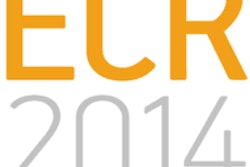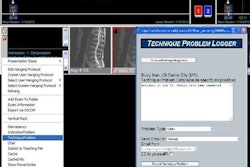
The radiology information system was one of the first digital software tools available in medical imaging. But as the rest of healthcare moves into the digital age, the good old RIS is looking long in the tooth.
Dr. Paul Nagy, director of quality at Johns Hopkins University's department of radiology, along with Dr. John Nance Jr. and Christopher Meenan, discuss tools for modernizing RIS software in the May issue of the American Journal of Roentgenology (Vol. 200:5, pp. 1064-1070).
Most of the tools provide ways to unlock the value of the treasure trove of data available in every RIS.
"A massive amount of available data is not being fully used," Nagy told AuntMinnie.com in an interview. "It's imperative to unlock the data and get access to it for process improvement. Data can help managers understand the complexity of their operations. New software tools exist and are continuing to get better that can make a RIS more functional."
So what are these tools? The authors identified the following areas of functionality that every RIS should have.
1. Digital dashboards
Radiology departments and imaging centers that do not use digital dashboards are working with blindfolds on. Dashboards present real-time or near real-time data that can be used to monitor operations and help make rapid changes.
Dashboards can show, for example, if individual imaging suites are operating at planned capacity, any delays that are occurring, if a technologist is overloaded, and how well radiologists are delivering service back to the referring physician.
An efficient dashboard must be able to aggregate and store data from multiple systems. Data should be indexed so the information is accessible across multiple platforms. Dashboards should be user-customizable, handle workflow integration, and show only the most relevant data at an appropriate time based on user and workflow requirements.
Most important, dashboard information that requires change needs to be acted on, whether to improve outpatient waiting time, reduce the time needed to resolve quality issues, lower the number of repeat exams, or improve report turnaround time. Procedures need to be established to react to alerts.
2. Electronic medical record aggregation
Radiologists who work in a hospital with an electronic medical record (EMR) system probably have access to patient medical records. However, in all likelihood, they will need to log in to a different computer or software and interrupt their workflow.
Some academic radiology departments and others have developed software that automatically provides a summary of relevant EMR data; the summary opens and displays on a side monitor when a radiologist opens an exam on a PACS workstation. The relevant data should be customizable and able to display relevant patient history, clinical notes, and laboratory and pathology data.
"There is never enough information in the order," Nagy. "Access to the EMR should be considered a prerequisite for a final report."
RIS and EMR integration is just beginning to be developed. Many EMR systems were not designed with an open architecture, according to Nagy.
"In an ideal world, I would prefer to have the RIS be part of a hospital information system than part of a PACS," he said. "I want to know when referring physicians are reviewing my results. I want to be using the same platform that they are, so I can better understand what they need and provide better service. Some EMRs enable radiologists to know when their results are read and acknowledged by referring physicians."
3. Clinical decision support
Clinical decision-support (CDS) software is usually interfaced with a computerized physician order-entry (CPOE) system that may or may not be managed by the RIS. These systems exist in various levels of sophistication, including applications that monitor how an ordering physician responded to a duplicate alert or a recommendation to order a different procedure.
Additionally, there is CDS software for radiologists that can help improve image interpretation quality. At present, these include a variety of Web-based image search applications and database resources.
4. Critical results reporting
Many commercial software programs exist to automate, streamline, and manage the reporting of critical results and unexpected findings. The ideal product should meet the needs of radiologists and recipients alike, be flexible enough to deliver a message according to the specific situation and physician preference, and provide automatic documentation in the patient record.
Nagy would also like to have the ability to add instant message interaction to facilitate quick communication.
"Although the communication of critical findings will likely remain a tangible component of routine workflow, ongoing and future informatics efforts should offer solutions to minimize interruptions," he said.
5. Customer service
Today's radiologist has two customers: the referring physician and the patient. A RIS can make the exam-scheduling process easy for a patient. Adding Web-based online scheduling adds another dimension of efficiency and convenience.
For ordering physicians, RIS-based personnel tracking systems, CPOE systems, and automated reporting systems all improve access to radiologists and the radiology department.
Apple iPads and other mobile devices offer new opportunities for remote consultations. With the advent of PACS, there was a drastic decline in the number of referring physicians who regularly visited radiology departments to look at films and discuss cases. This could be a way to restore such face-to-face consultations.
"The radiologist needs to be a value innovator and get closer to the patient care teams," Nagy said. "A phone is just not as good as a face-to-face interaction, but few physicians will come down to radiology. Technology should be able to bring the radiologists virtually on rounds and in the operating room. The answer is being found in apps for smartphones and mobile tablets."
6. Technologist feedback
Providing feedback to radiologic technologists about the quality of images is increasingly limited in this digital age. It's exacerbated by geographically remote image acquisition, and also by greater workload demands.
Co-author Meenan, who is director of clinical informatics at the University of Maryland Medical System, and colleagues developed a Web-based tool that enables radiologists to efficiently document and provide feedback to technologists about specific cases. Both internal and commercial software have been developed for use with a RIS.
7. Peer review
Peer-review software integrated with a RIS or a RIS/PACS is not novel: It's been available and used for years.
The authors foresee its use as a vital component for improved radiology resident training. They envision more use of software that can query the RIS and extract preliminary reports, finalized reports, and report metadata.
Additionally, whether for residents, fellows, or radiologists, the authors anticipate that RIS software will be able to store, track, and analyze a variety of metrics that can be automatically extracted from radiology reports, such as trends in dictation style and relative value units.
8. Data mining, surveillance, and outcomes
Any RIS contains a wealth of data. Data-mining, case-tracking, and feedback tools all offer diverse ways to improve radiologists' performance, the radiology department's performance, patient safety, quality assurance, cost-effectiveness, and clinical correlations.
"A RIS should not sit in a vacuum," Nagy said. "But no matter how good software tools are, if they aren't clinically integrated, they're not going to be very useful or effective."



















